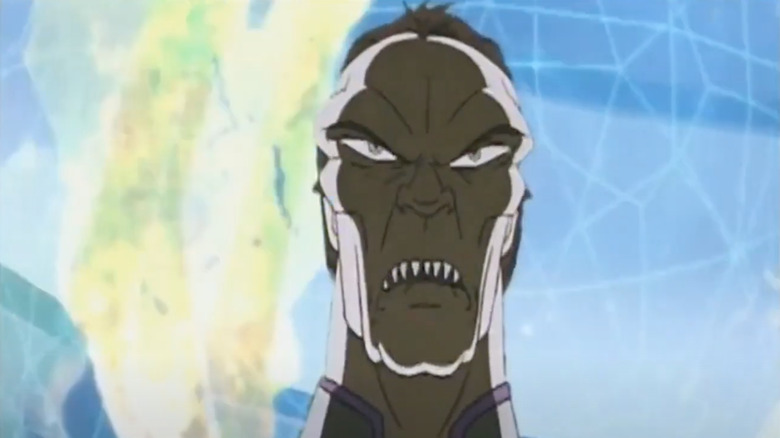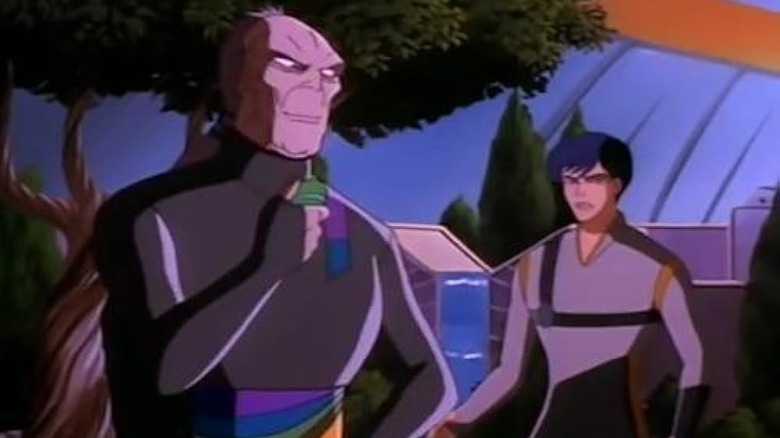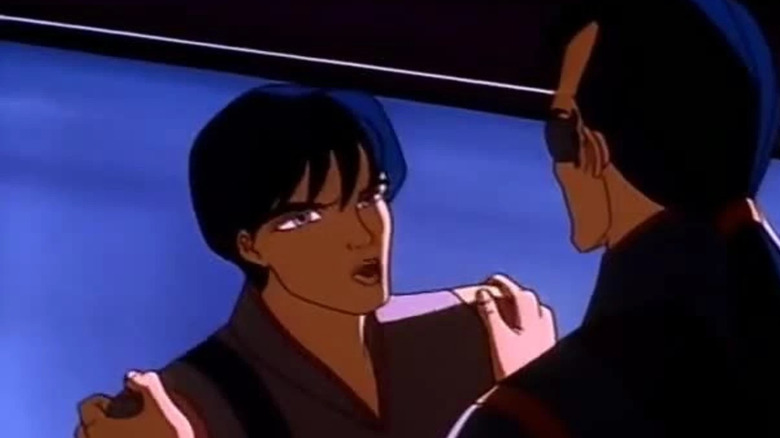
In 1989, Steven Spielberg was trying really hard to get into the animation game. He had served as executive producer on films like Don Bluth’s “An American Tail” and Robert Zemeckis’ “Who Framed Roger Rabbit,” steering both of them to great success. He also founded his own animation studio, Amblimation, that year, hoping to continue his track record of making striking, original, and successful animated features. By 1989, though, Spielberg and Bluth had suffered a falling out, and new projects didn’t come easily. As a result, Amblimation only ever made three features: “An American Tail: Fievel Goes West,” “We’re Back! A Dinosaur’s Story,” and “Balto.”
Advertisement
Spielberg has better success on television, overseeing a new wave of animated shows that ushered in a new generation of entertainment. 1990 saw the debut of “Tiny Toon Adventures,” a fourth-wall-breaking comedy series featuring a new collection of “kid” counterparts to well-known Warner Bros. characters. That show was popular enough to then warrant the creation of the freewheeling “Animaniacs” in 1993, as well as the masterpiece that is “Freakazoid!” in 1996. Spielberg also oversaw the animated shows “Histeria!” and “Toonsylvania,” as well as primetime series like “Family Dog” and the Berkley Breathed “Bloom County” TV special “A Wish For Wings That Work.” In terms of animation, Spielberg hit his stride in the ’90s. And he’s still going; the man is now an executive producer on “Gremlins: Secrets of the Mogwai.”
Advertisement
One of the most obscure pieces of ephemera in Spielberg’s animated canon, however, is a TV series called “Invasion America,” a show that aired on the WB for only 13 episodes in June and July of 1998. “Invasion America,” unlike the series listed above, was not a comedy; it was a very serious, steely, angsty sci-fi show about a teenage boy who finds out that he’s half alien. Spielberg co-created the series with Harve Bennet, the executive producer behind “Star Trek II: The Wrath of Khan,” “Star Trek III: The Search for Spock,” and “Star Trek IV: The Voyage Home.”
Steven Spielberg and Harve Bennet’s Invasion America is one of their most obscure projects
The plot of “Invasion America” was quite involved. It’s explained that an alien force from the planet Tyrus came to Earth in the 1980s, hoping to engage in peaceful contact. There is, sadly, a schism within the Tyrusians. The planet’s ruler, Cale-Oosha (Lorenzo Lamas), wishes to make peace with the humans, while his uncle, the evil Dragit (Tony Jay), wants to conquer Earth. There is a fracas, a Civil War breaks out, and Cale-Oosha, along with his alien friend Rafe (Edward Albert), has to flee to Earth. He disguises himself as a human and proceeds to fall in love with a human woman named Rita (Kath Soucie). They have a child together and name him David.
Advertisement
David (Mikey Kelley) grows to his teen years not knowing that his father is an alien. The show’s action picks up when the Dragit return to Earth to kill off Cale once and for all, forcing David’s true identity into the spotlight. The rest of the series follows David’s adventures as he flees the Dragit’s evil alien spies and fosters his own previously unknown alien superpowers. (His abilities are enhanced and controlled by a Power Glove-like widget called an Exotar.) The tone of the show was closer to “The X-Files” than anything else, presenting a kid-friendly version of alien conspiracies.
“Invasion America” featured a few notable guest voice actors, including Kristy McNichol, Ronny Cox, and James Sikking. Leonard Nomoy also appeared as a villain named General Konrad, likely participating because he and Bennet collaborated on three “Star Trek” movies. While the show was produced in 30-minute episodes, it aired two episodes at a time, presented in 60-minute blocks. The series finale was similarly composed of a three-episode, 90-minute block.
Advertisement
How was Invasion America?
The series wasn’t very well-received. The review in the Los Angeles Times, written by Howard Rosenberg, argued that “Invasion America” tried to cover up its thin plot and bad writing with splashy visuals. Indeed, the show made use of then-rare-for-TV CGI models (for spacecraft exteriors), and its showrunners clearly endeavored to make everything look rich and satisfyingly mechanical. Anita Gates, writing for the New York Times, was equally impressed with the visuals –”stylish to the point of Art Deco,” she wrote – but also noted that “Invasion America” had no heart. Even in 1998, fantasy “chosen one” narratives were already immensely tired, as Gates pointed out. At least Ken Tucker’s review for Entertainment Weekly was positive. He noted, per Rotten Tomatoes, that the show was “derivative” but that its visuals made up for it.
Advertisement
Unusually, two versions of “Invasion America” aired in different time slots during its run. The full-length iteration ran on the WB, while a truncated, less violent rendition ran on Kids’ WB. The series ended with a chyron saying that it was “The End of Book One.” It’s full 13 episodes were presented as a single, prolonged story arc, which was unheard of in animation at the time and wasn’t really common outside of soap operas. It wouldn’t be until the mid-2000s that season-long stories became de rigueur. Sadly, there was no Book Two.
One cannot fault “Invasion America” for a lack of ambition. It was pushed very hard at the time and even had tie-in novels. It was slick and toyetic and had some of the most talented Hollywood bigwigs working on it. It seems, though, that “Invasion America” was just too familiar to catch on, and it came and went without much fanfare. Spielberg fell back to producing the “Animaniacs” spinoff “Pinky & the Brain,” while Bennet fell back into his “Time Trax” money. “Animaniacs” was eventually revived while “Tiny Toons” was rebooted. “Invasion America,” on the other hand, remains dormant.
Advertisement
About The Author
Discover more from imd369
Subscribe to get the latest posts sent to your email.






